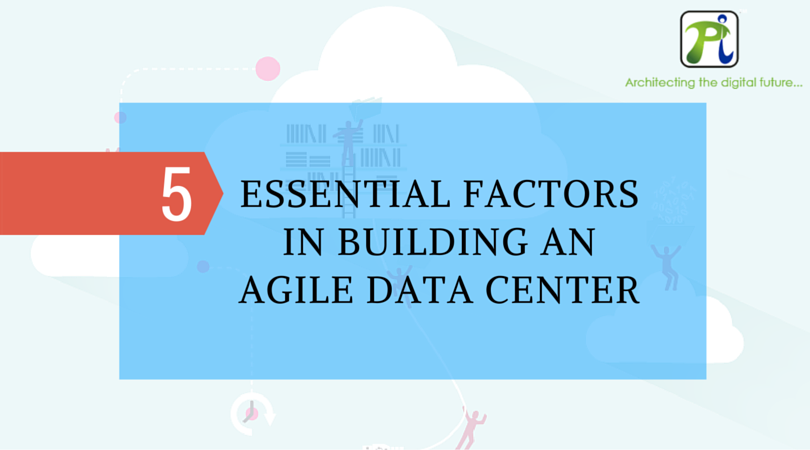
If we look at the scenario of data centers, nearly 75% of all the workloads of DC are Virtualized and this would further increase without any doubt. The major challenge IT admins generally face is that conventional storage is not properly equipped to deal with the virtualization because the storage is majorly for physical workloads.
Problem could shoot up as legacy storage, with LUNs (Logical Unit Numbers) and Volumes that might house many individual virtual machines (VMs), which causes resident VMs to battle over limited resources which are in-house. This phenomenon if often called “ Noisy Neighbour”. The only solution here is to throw high-performance Flash Storage at the problem, and meanwhile this cannot fix the problem but postpones dealing with the problem which is undergoing.
While many companies would aspire to overcome this problem, unfortunately It becomes so expensive and sometimes this is not so efficient as it requires large number of disks to automate the diversified virtualized workloads.
Here are the five key things for data center modernization efforts
Speed
The last thing generally employees at data center want is to get tied with IO performance and concerns related to latency even when using flash storage.
IO requests are handled in a chronological order with the conventional storage and so a mission-critical test gets blocked in between a big data base update which could be relatively not so important. Moreover, it is why boot storms and virus scans fluctuate VDI user experience.
If a single Virtual Machine acts like a noisy neighbour with in LUN and demands more than the required share of performance, it indirectly affects the performance of the other Virtual Machines in the network. The alternate for this to go ahead with VM Aware storage (VAS), which utilizes individual Virtual Machines as the unit.
VAS can provide each and every Virtual Machine its own performance line. Fortunately, there are no LUNs and so there are no neighbours. So ultimately in VAS storage Platform, it doesn’t effect the whole performance if one VM doesn’t work well. VM Aware Storage handles stack up actions one by one to finish the performance hiccups that can be so prevalent. Hence without the limitations of Physical Storage and traditional approaches, these application performs 6 times faster.
Quality of Service (QoS)
There is a huge buzz around QoS, but unfortunately it is rarely defined. Earlier, storage systems used to set min and max IOPS at volume level, that is many different VMs inside get the same QoS.
VM Level Quality of Service allows the IT admins to set customized parameters for each and every VM that is simply fastening the min and max IOPS as required to impose a ceiling on a rouge VM or to check resources for mission-critical VM. Multiple tiers on a single platform can be created at VM level QoS. Earlier service providers used to buy some dedicated gold applications or some dedicated silver applications individually, but with VM-level QoS you can create gold, silver and bronze or any other on single storage device and engage each VM to a tier.
Disaster Recovery
It is essential to have an efficient disaster recovery (DR) plan that should include per application/VM replication with automation and simplicity. An ideal plan should segregate applications or VMs as per their business criticality. When a disaster is seen, mission-critical application need to be very quick and should run in a very short timeframe. This requires Recovery Point Objective (RPO) and Recovery Time Objective (RTO) of such application be summarised to meet the specific SLAs. It is advisable to have a high performance per-application or VM Application replica, so it to be beneficial in getting the critical applications up and running in least possible of time windows .
An Ideal DR plan should also have the ability to automate the workflows like failover pinned migrations and failback. Is it well known fact that the most of the applications in an enterprise environment are virtualized, and meanwhile the DR plan should give the best recommendation on which recovery tools must be utilized for virtual servers.
Predictive Data Analytics
Enterprises or service providers cannot exactly predict what virtualized workloads that might add up or need to be modified in future. They could only guess at performance and capacity requirement and so often these people buy more capacity than required.
Data analytics is something crucial in determining the metrics to make better decision about application performance and storage needs. Predictive analytics is something that enable data center professionals to get a clear picture about the use of capacity and performance, and predict future needs.
Modern technologies like elastic search, enables the application to figure out millions of data points in seconds. Finally, the point is, predictive analytics replaces guess with perfect vision and right approach.
Scale-Out Manageability
IT admins need to simplify the storage management and also need to avoid manual configurations often with respect to LUNs and Volumes as the Virtual Infrastructure keeps increasing to hundreds or thousands of VMs.
VM level storage management enables IT admins to automate the placement of VMs constantly in the respected storage units, taking relevant things into consideration like resources required, space savings and cost in time and which data to move to VMs. So when a VM is migrated, all the related aspects like Screenshots associated, related statistics and Qos Policies should also migrate using a compressed or encoded protocol.
The automation and storage intelligence provided by policy-based VM management combined with advanced analytics and QoS allows enterprises and service providers to often triple or quadruple their virtualized infrastructure without adding a corresponding number of dedicated storage personnel.
Storage analytics and the automation from the policy based VM management combined with advanced analytics and QoS allows IT organisations to multiply their virtual infrastructure without adding more and more number of dedicated storage personnel.
Questions? We're here to help.

